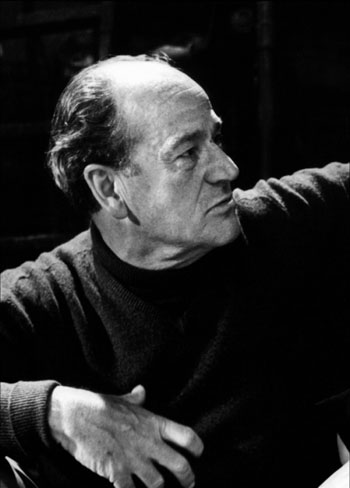“Anthony Mann is one of those directors admired by cinephiles but not well known to the casual moviegoer, the cinematic equivalent of what we call a ‘writer’s writer,'” wrote Doug Dibbern in the Notebook when Film Forum staged a 32-film retrospective in the summer of 2010. “He made great movies in more than one genre—most famously his film noirs with the cinematographer John Alton and his Westerns with Jimmy Stewart—but unlike Welles, Ford, or Hitchcock, he never made that one decisive masterpiece that critics could stamp as the culmination of a career.” It’s Mann’s “workmanlike efficiency that makes his oeuvre so fascinating for the ardent collector: because, in order to really appreciate him, you need to see a lot of his films, almost all of which are good.”
New Yorkers will once again have the opportunity to see eight of those films as Anthony Mann: Mean Streets and Open Spaces opens today at the Museum of the Moving Image and runs through April 27. “In some ways, Anthony Mann is easy to peg as a filmmaker,” writes Imogen Sara Smith for Moving Image Source. “His career falls into clear stages defined by genres—B crime dramas in the 1940s, A westerns in the 1950s, historical epics in the 1960s—and is marked by repeated motifs and themes like revenge, flamboyant violence, and doppelgangers.” Smith’s terrific essay is divided into three sections as she examines the policiers, the noirs and the westerns.
Smith: “But while his films may seem easy to classify and analyze, Mann remains on a deeper level hard to know as a director. This is partly because so little has been known about him as a person. In his new book, The Crime Films of Anthony Mann, Max Alvarez dispels the vague and unreliable information that has previously been published, revealing fascinating biographical background on the director, who was born Emile Anton Bundsmann in San Diego in 1906.”
“From the hills of San Diego, Mann’s family moved to New York City to cultivate his theatrical ambitions,” wrote Nick Pinkerton in the Voice in 2010. “Emil Anton Bundsmann became actor Anton Mann, then a stage director, then imported to Hollywood to shoot screen tests for David O. Selznick. Finally Anthony Mann, he directed films after 1942, doing his reps in rinky-dink musicals and thrillers, then making a quantum leap from stinker The Bamboo Blonde (1946) to the tensely rigged Desperate (1947).”
Fernando F. Croce for Slant: “As hard and dark as asphalt, these Poverty Row marvels (T-Men, Raw Deal, He Walked by Night) are fiercely situated in the anxious hangover of postwar America, where subterranean organizations must be perilously infiltrated and John Alton’s cinematography gives dazzling, ominous visual form to free-floating paranoia. This noir aesthetic is also detectable in Reign of Terror and Border Incident, a pair of stunners from 1949.”
“Violence is never titillating in Mann,” writes Michael Joshua Rowin for Artforum, “but instead always scarily consequential and the product of familial, political, or moral conflict. This almost too-real cinematic philosophy carried over into a legendary partnership with James Stewart, starting in 1950 with Winchester ’73. Nobody shot bloody psychodramas against crags and plains better than Mann—not even John Ford—and by bringing out what had up to that point been Stewart’s mostly dormant inner turmoil, he found the perfect fallible human figure to frame against harsh, cruel, and daunting landscapes.”
“While Mann would eventually segue into monumentally scaled epics with 1960’s Cimarron, 1960’s El Cid, and 1964’s The Fall of the Roman Empire, he achieved true grandeur in his Westerns, populated as they are not only by restlessly conflicted heroes but by mythic individual and familial dynamics,” agrees Nick Schager, writing for the L, where Elina Mishuris now recommends Raw Deal (1948) and Aaron Cutler writes: “Mann considered his transitional, surprisingly popular T-Men [1947], whose scenario he cowrote, as ‘my first real break toward being able to make films the way I wanted.'”
Updates, 4/25: At the L, Jordan Cronk recommends Side Street (1949): “Shot mostly on location in New York City, the film stands as both nostalgic timepiece and aesthetic watershed, proving a seamless transition for its director’s move out West.” And for Zach Clark, it’s Winchester ’73: “Mann’s Old West is desperate and unsentimental…. For anyone who thinks the narrative seems too experimental or the morality too progressive for 1950 Hollywood, Rock Hudson’s presence as murderous Indian bandit ‘Young Bull’ should make you feel right at home.”
For news and tips throughout the day every day, follow @KeyframeDaily on Twitter and/or the RSS feed. Get Keyframe Daily in your inbox by signing in at fandor.com/daily.




